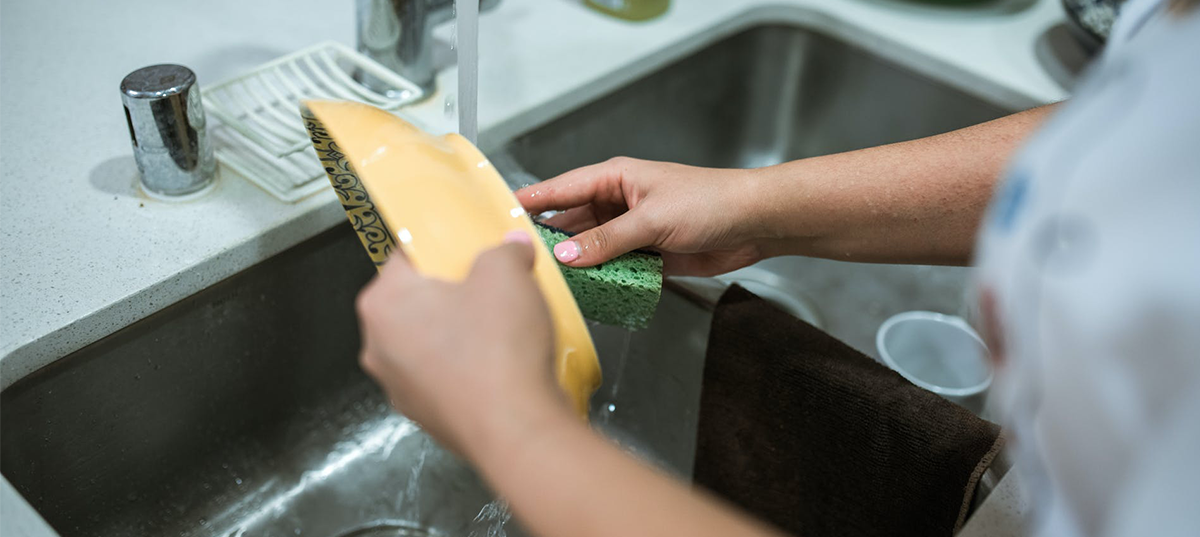4 Ways to Clean a Sponge – and When to Replace It

November 2023
At Erie Station Village, our apartments and townhomes have well-appointed kitchens that will make cooking at home a joy. Of course, with cooking comes cleaning. And if you’ve ever wiped down your kitchen with a sponge, you may have wondered how often you should replace it? Not only can we help you know when it’s time, but we can also offer four ways to clean your sponges so they last longer and don’t spread bacteria and germs.
Over time, sponges accumulate grease, food debris, and other things you probably don’t want to think about. All of which leads to a germs and bacteria. And wiping up with a germ-ridden sponge just means spreading those germs around even more. How long a sponge lasts depends on how well you take care of it. A sure sign that you should replace a sponge is if it has a sour or moldy odor when you give it an up-close sniff.
Keeping a sponge clean and safe starts every time you use it. If you’ve wiped up any food or greasy surfaces, be sure to fully rinse your sponge and wring it out completely. A dirty, soggy sponge will allow bacteria and germs to multiply more quickly. While that’s a good start, you should deep clean sponges weekly, or more often if used frequently.
Here are four quick and easy ways to do the job right and get more life out of your sponges:
Vinegar
Vinegar is a great household cleaner because it acts as a mild, natural disinfectant. Just fill a bowl with enough white vinegar to fully submerge your sponge. Allow it to soak for 5 to 7 minutes. Remove the sponge, rinse it with hot water, and wring well.
Dishwasher
If you live at Erie Station Village, you’ve got a great dishwasher! Any time you’re about to start a load of dishes and you think of it, pop that sponge in the top rack. The combination of hot water and detergent will do a great job cleaning it.
Microwave
This is the quickest way to sanitize a sponge. Just rinse your sponge with water and place it on a microwave-safe dish without wringing it out. Then microwave on high for 60-90 seconds. Be careful because it will be hot. After it has a chance to cool down, wring out your sponge.
Boiling
If you’re already cooking on your stove, it’s not too much trouble to boil a sponge. Just add enough water in a small pot to fully submerge your sponge. Bring the water to a boil and let the sponge boil for 5-7 minutes. Remove the water, let the sponge cool, and wring it out.
